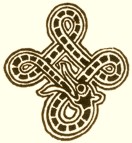![]()
![]()
THE LANDSCAPE DESCRIBED BY THE INDO-EUROPEAN PROTOLANGUAGE
by Thomas V. Gamkrelidze and V. V. Ivanov
Scientific American, March 1990, P.110
The landscape described by the reconstructed Indo-European protolanguage is mountainous—as evidenced by the many words for high mountains, mountain lakes and rapid rivers flowing from mountain sources. Such a picture cannot be reconciled with either the plains of central Europe or the steppes north of the Black Sea, which have been advanced as an alternative homeland for the Indo-Europeans.
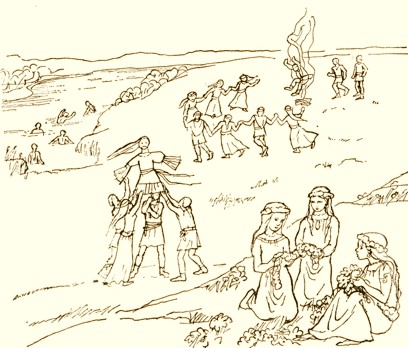
PRIMORDIAL FOLK CELEBRATIONS HELD ON FEBRUARY 14 [BANISHMENT OF
EVIL AND
PURIFICATION WITH FIRE] OF TEARNDARACH -- WINTER SURRENDERS ITS COLD
SUPREMACY TO BLOSSOMING SPRING [COUPLES JUMPING OVER FIRE --
FERTILITY RITES ASSOCIATED WITH MALE PRINCIPLE] AND VARDAVAR
[VADAVAR -- WATER -- ALSO -- VARD -- ROSE -- FERTILITY RITES ASSOCIATED
WITH FEMALE PRINCIPLE]. DRESSING UP OF KUK [LA] -GOOGOO [DOLL] TIK[NIK]
CEREMONIAL STRAW DOLL -- TI -DEA TI- KIN-KEANK [LIFE...] DEITY --
DEUS -- DAV-IT‛ --DEV --DIV-IN-ITY -DIVINE -
DEVA -- DEVI -- DIVA -- [RUS. DEVOCHKA]
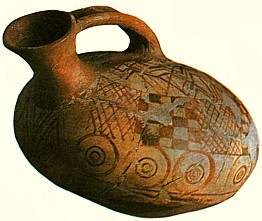
A JUG DECORATED WITH GEOMETRIC SYMBOLS
SECOND MILLENNIUM BC.
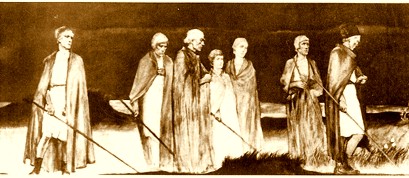
ARMIN FOLK COMMUNITIES
The vocabulary does, however, fit the landscape of eastern Anatolia and Transcaucasia, backed by the splendor of the Kov Kaz [Caucasus] Mountains. The language clothes its landscape in the flora of this region, having words for "mountain oak," "birch," "beech," "hornbeam," "ash," "willow" or "white willow," "yew," "pine" or"fir," "heather" and "moss." Moreover, the language has words for animals that are alien to northern Europe: "leopard," "snow leopard," "lion," "monkey" and "elephant."
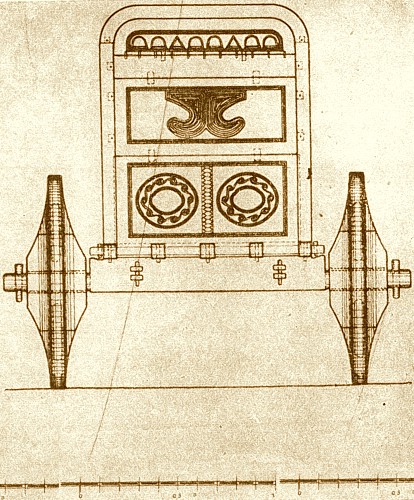
LCHASHEN WAGONS. CA. 1800 BC. OLDEST IN THEIR KIND.
THE WAGONS WERE COVERED WITH SACRED SYMBOLS OF
ETERNITY, LIFE, SUN, FIRE AND MOTHER EARTH/SACRED SOIL.

SPINNING WHEEL OF LIFE IN MOTION.
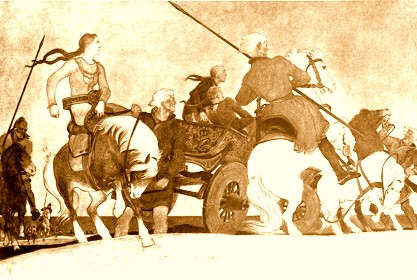
THE GREAT MIGRATION FROM THE SACRED HIGHLAND.
The presence of a word for "beech tree," incidentally, has been cited in favor of the European plains and against the lower Volga as the putative Indo -European homeland. Beech trees, it is true, do not grow east of a line drawn from Gdansk on the Baltic to the

LCHASHEN WAGONS. CA. 1800 BC. OLDEST IN THEIR KIND.
northwest corner of the Black Sea. Two species of beech ( Fagus orientatis and F. sylvatica) flourish, however, in what is now Turkey [historic Armenia]. Opposing the so-called beech argument is the oak argument: paleobotanical evidence shows that oak trees (which are listed in the reconstructed language's lexicon) were not native to postglacial northern Europe but began to spread there from the south as late as the turn of the fourth to the third millennium B.C.
